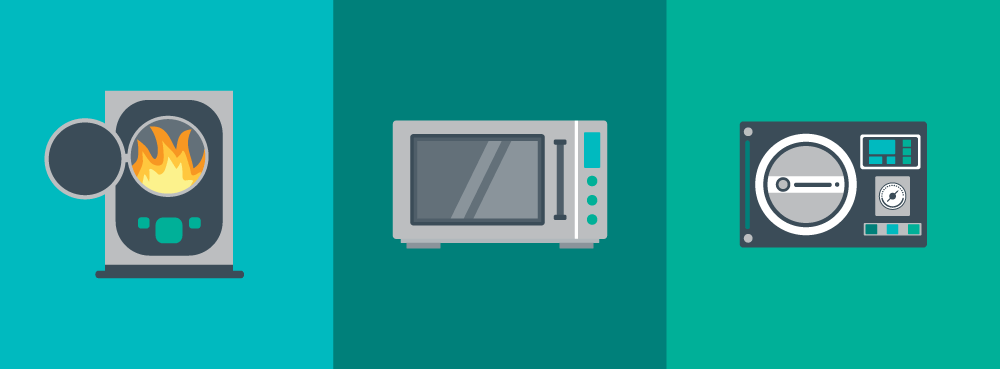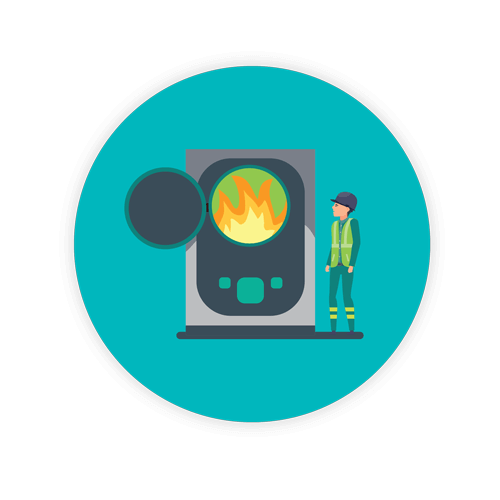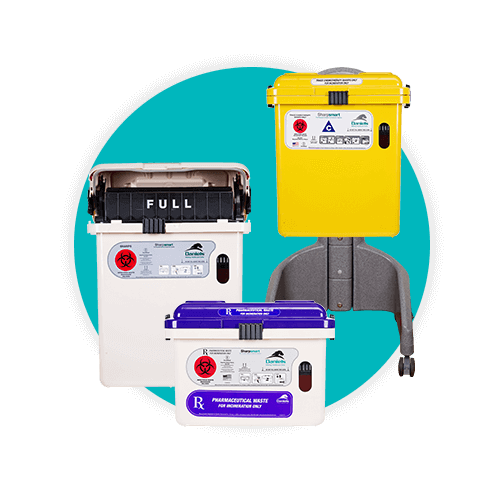Treatment of Medical Waste

Any facility that produces medical waste has a responsibility to know what happens to it every stage from creation to disposal. Does it go to a landfill? Does it get burned? Depending on state, county, and local municipal regulations, a number of options may be available for healthcare waste management and treatment options. Compliance is key in reducing the risk for fines and penalties that can reach into the tens of thousands of dollars per day, per violation faster than you can say, “But I didn’t know!”
A number of methods for medical waste treatment may exist for a variety of healthcare facilities, again depending on size (large and small medical waste generators) as well as location. Not all states allow the same type of treatments. A large hospital may have more options for hazardous waste disposal than a tattoo parlor or a dental facility. It is the responsibility of the facility owner to know federal and state regulations regarding medical waste segregation, handling, packaging, labeling, and disposal.
Common methods of medical waste treatment
Primary methods of medical waste treatment and disposal include (and not in order of preference or precedents – the list is just alphabetical):
- Autoclave
- Chemical disinfection
- Incineration
- Irradiation
- Microwave
When it comes to specific federal or state guidelines, always refer to your state’s code of administration or state government administration codes on top of the federal regulations. Yes, it can be mind-boggling, but it’s important.
Medical waste disposal processes are not the same for all facilities.
A large-quantity generator may have more options than a small-quantity waste generator, so always verify with state authorities before merely assuming. Not only that, but different governmental departments provide guidelines for the treatment and disposal of healthcare waste management and disposal.
For example, in Ventura County, California, several medical waste treatment options are available for small quantity generators when it comes to biohazardous and sharps waste:
- On-site steam sterilization by autoclave – this process requires registration with annual inspectors. This treatment method is not acceptable for water waste that contains chemotherapeutic, pharmaceutical, or pathology contaminants.
- On-site treatment of an alternative technology, or in other words, sterilization, chemical, or heat disinfection. It should be noted that according to their government document, “most technologies are unsuitable for the small quantity generator…”
- Removal by a registered and approved medical waste transporter to take healthcare waste to an off-site medical waste treatment facility must be approved by the California Department of Public Health.
Regulations pursuant to state and federal laws can often be found on County Department of Public Health or Environmental Health Divisions websites. The Environmental Protections Agency provides valuable resources for environmental and health agencies throughout the country.
For example, guidelines for Kentucky are regulated by four agencies: the Kentucky Environmental Quality Commission, the Kentucky Department for Natural Resources, the Kentucky Department for Environmental Protection, and the Kentucky Department for Public Health.
In Maryland, regulations are under the purview of the Maryland Department of the Environment, Maryland’s Department of Natural Resources, and Maryland’s Department of Health and Mental Hygiene.
In Kansas, the Kansas Department of Health and Environment is the go-to agency for approved medical waste disposal methods.
And, yes, you need to read through and be familiar with all of a state’s guidelines to ensure compliance.
Treatment methods
Incineration is a process of burning (controlled) of medical waste in an incinerator designed for that purpose. The size of the incinerator and whether that medical waste disposal is handled on-site or off-site depends on the size of the facility, the amount of waste produced, and local regulations regarding limitations. Following autoclaving processes, decontaminated sharps or treated medical waste is then picked up by a medical waste removal company for disposal as non-infectious waste. However, some types of waste can’t be decontaminated in an autoclave, such as chemical wastes and pharmaceutical waste.
Due to concerns regarding incineration and air quality, the EPA Office of Air Quality Planning and Standards provides specific information for hospital medical infectious waste incinerator (HMIWI) standards.
Chemical treatment is an option used to decontaminate or deactivate liquid wastes on-site. This treatment method saves facilities money in packaging and transportation. Safety guidelines and specifications regarding on-site chemical treatment should be available at every facility. Most common types of chemicals used include sodium hydroxide, chlorine, and calcium oxide; however, safety is key, especially in regard to off gas and dangerous volatile organic compounds (VOCs) when used.
Microwave treatment is similar in nature to autoclave, utilizing a heat source to decontaminate various types of medical waste. Microwave treatment works better for solid or not completely dry waste, as the process development of a sterilizing steam as moisture in the waste enables heat to penetrate deeper. Guidelines for microwave treatment are applicable and may include steps such as shredding or mixing the medical waste with water to achieve desirable results. A double benefit of shredding also reduces the volume of healthcare waste transported to landfills.
Irradiation is another type of medical waste treatment focusing on biomedical waste through the application of technology such as gamma irradiation. The process is not as common as others, primarily due to in-depth regulatory requirements, location of the site, and approvals of technology used. Such approaches to medical waste treatment necessarily require specific and accurate waste segregation. Costs associated with this methodology are often prohibitive.
We know the rules – do you?
Daniels Health is familiar with the most recent regulations pertaining to all types of healthcare waste management and disposal. While we understand that cost savings are primary concern of medical facilities, so too is the volume of healthcare waste heading to landfills. Our goals focus on preventing needlestick injury scenarios and offering clients sustainable and cost-effective solutions for multiple waste streams generated by healthcare facilities. For more information on how Daniels Health can not only help you identify waste stream generation at your facility, but encourage the cradle-to-grave approach, give us a call today.
Let's Talk!
Your time is valuable, and we don’t want to play hard to get. You can either phone us directly on the details listed on our contact page, or feel free to fill out this short form and one of our team members will get back to you as quickly as possible.
